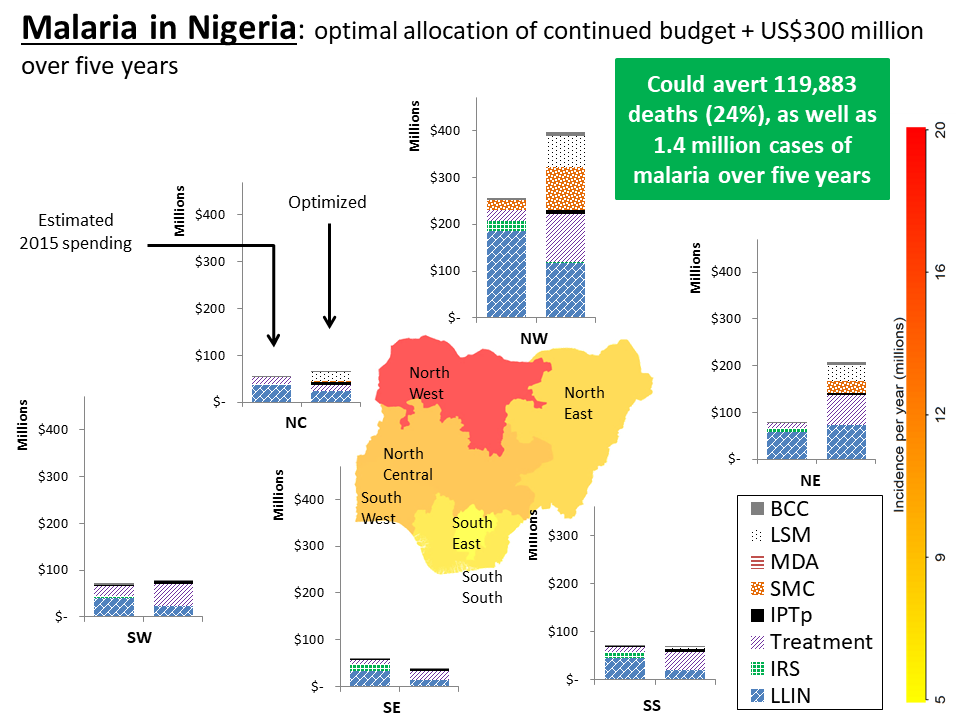Nigeria case study
Nigeria accounts for more than 25% of the world’s malaria cases and 19% of the world's malaria-related deaths — more than any other country.
We applied an Optima Malaria model to estimate the allocation of Nigeria’s current (estimated 2015) spending plus an additional investment by the World Bank of US$300 million to minimize disability-adjusted life years (DALYs). The study considered funding allocations across Nigeria’s six geopolitical regions, as well as seven interventions:
- Long lasting insecticide treated nets (LLINs);
- Indoor residual spraying (IRS);
- Intermittent presumptive treatment during pregnancy (IPTp);
- Seasonal mass chemoprevention in children (SMC);
- Larval source management (LSM);
- Mass drug administration (MDA); and
- Behavioural change communication (BCC).
We found that:
- Optimizing continued estimated 2015 spending plus an additional US$300 million investment could avert 119,883 deaths (24%), as well as 1.4 million cases of malaria.
- Treatment and LLINs are priorities to reduce mortality and incidence respectively.
- IPTp and BCC are cheap and effective and should be funded.
- Additional funding should be geographically prioritized to the northern regions.
The Optima Malaria model is currently deployed in back-end Python code and can be run by one of our modeling specialists. A front-end version may become available in future.
Applications
Maximizing the impact of malaria funding through allocative efficiency: using the right interventions in the right locations
To use, contact us at: info@ocds.co


 © Optima Consortium for Decision Science, Burnet Institute, Melbourne, 2025
© Optima Consortium for Decision Science, Burnet Institute, Melbourne, 2025